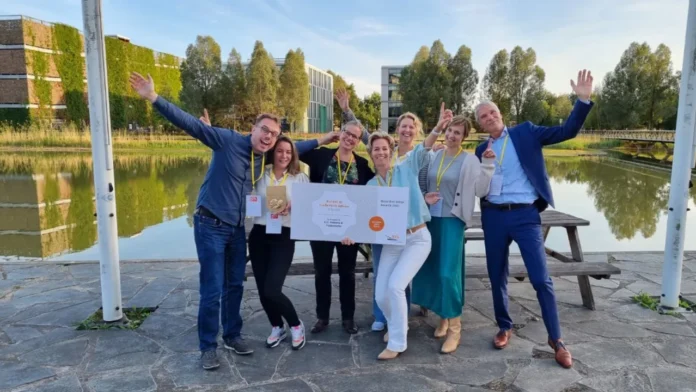InnoSign is one of the companies to receive the Gerard & Anton Award. The Eindhoven start-up has developed key technology which will contribute to the success of cancer treatment.
This was InnoSign’s first year as an independent company, says Sigi Neerken, one of the company directors. On March 8th they were officially no longer part of Philips.
“Winning this award will give us a boost. It means good publicity. It is also a great stimulus to carry on with our work”. Neerken says this is the effect of the Gerard & Anton Award, a prize awarded each year to the most promising start-ups in hightech region Eindhoven. “We have a team that is committed to making a difference in people’s lives”.
That this is a realistic expectation was demonstrated this year in the U.S.A. A medical specialist used InnoSign’s method in the treatment of an 18-year old cancer patient whose therapy options were exhausted. He is doing well now.
Signal routes
“We have developed a new way to analyse cancer tissue”, Sigi Neerkens explains. In our method, we look at the RNA to determine the activity of thesignal routes in the cell. These signal routes determine the behaviour of the cell, and in cancer cells this activity is impaired which means the cell won’t stop dividing”.
Progress
“What we do is develop a method which shows which of those routes causes the cancer. Medical specialists can subsequently treat those according to a specific method. This means a great advance”, says Neerken.
“Because our method measures which signal routes are disrupted in the tumor, medical specialists have the means to make a more accurate assessment of which purposive therapy will be effective for which patient, even in cases where DNA analysis, for example, is inconclusive. We have demonstrated in several studies that this means possible new options for patients for whom the current diagnostic techniques see no further possibilities”, Neerkens says.
Insurance
When InnoSign’s diagnostic system will be part of the standard cancer treatment is difficult to pinpoint. “It depends on how successful the studies will be in the time to come. The technique will first be offered to patients whose treatments have not been effective. This path should lead to a point where insurance companies will pay for the our diagnostic technique. That point is still in the future”.
Source: Studio040
translated by: Greta
















